#redmi k20 pro mobile phone review
Video
bes buy mi 11x pro and redmi k20 pro mobile phone review
2 notes
·
View notes
Text
http://gorunearn.com/redmi-k20-pro-mobile-details/
#gaming#business#office.com/myaccount#officemovers#sharedoffice#mobile#phone#phonewallet#mobile phone#phone call#phonesex#redmi 6a#xiaomi redmi note 8 pro#xiaomi redmi k20#xiaomi redmi 8#redminote4x#mi mobile#k200#redmi k20 review#redmi k20 camera#redmi k20 vs realme x#news updates#world news#new rp#hip hop news source#news#wrestling news#trending news#viral news
0 notes
Video
youtube
Smart Minds
https://youtube.com/playlist?list=PLP8MtbY8Spq8N6ZOgXJw-VRX_4vCm1iYA
Here in this play list we have grouped all the videos of our channel Infotainment which makes your digital life simpler and easier.
How To Properly Upload Videos To YouTube From PC or Laptop
How To Change Language In whatsApp keyboard
How To Use Gmail Properly [2020] (Complete Tutorial)
How to Share Product Link from Amazon App
How to Wrap Text in Excel [2020] (3 easy methods)
How to use Amazon prime video app
How to Measure with Mobile | best measurement app
How to Disable Incoming Calls But not Data
how to order in bigbasket
How To Order On Amazon [2020] - Full Step-By-Step Buying Tutorial For Beginners
how to use urbanclap app step by step | Urban Company app
Subreddit icon banner and color change
What is Google Discover ? (V Important) How to Turn On/Off Google Discover on Android
How To Create Whatsapp Group ? 2020 [Very Simple]
How To Create Amazon Wish List
How To Do Cash On Delivery In Big Basket | bigbasket main kaise cash on delivery kare
Amazon Pay Balance Wallet - How to add Money in Amazon Pay Balance?
CRED App- How to get Free Rewards just Paying Credit Card Bills | Redeem Cred Reward Point
roposo app how to use
How to download free books from play books
What is Zen Mode on OnePlus Phone- How to Use it
How to Get Pan Card in Just 10 Minutes | How to Apply Pan Card Online Free
how to change date format in windows 10 and excel dd/mm/yyyy
how to recharge idea sim online
How to do Web Check In Easily| Print Boarding Pass (Hindi) New Rules I Baggage Tag I Indigo
How to get SHOT ON watermark on your smartphone camera photos
How To Purchase Books On Google Play Books.
how to copy excel sheet to another excel file with same layout and format
How To Lock Facebook Profile
Best Test wins under Dhoni Captaincy
How to Set Finger Print Lock On Display in Redmi K20 Pro | Smart Minds
How to Pay Credit Card Bill from Amazon app And get Cash Back
How to Check Bank balance in Cred App [Very Simple]
How to pay postpaid mobile bill (In Hindi)
Video Conference Call Etiquette For Those Who Work From Home
how to fix sim card not Detected in phone (5 Easy Ways)
Different Amazon Payment Methods | How To Make Payment on Amazon App
Calculate Percentage in Calculator of mobile
Seagate Backup Plus Portable 5TB Unboxing
How To Use A Pulse Oximeter Properly?
Lock and Unlock Your Android Phone by DOUBLE TAP
How to find mails by size in Gmail
samsung galaxy tab A 10.1 Unboxing and First Impressions (2020)
Benefits Of Amazon Prime Membership [7 benefits] in Hindi
How to Change Wallpaper in your Phone (Android)
how to turn on roaming on android
How to use and customize Quick Access Toolbar in Excel
How to Unsend a Sent Email in Gmail (Thank Me Later)
How to Switch Between Applications in a Second?
how to track your order on amazon
(2021)How to Subscribe For Amazon Prime Membership (in Hindi) -| Amazon
How to pay LIC premium online Through Mobile| LIC Premium Online Payment | LIC Premium pay online
boAt Airdopes 441 Wireless Earbuds Unboxing & Review [2020]
How to Hide Files/Photos in Android Phone (Very Easy)
Myntra | How to buy clothes on Myntra |
Windows 10 - How to Disable Startup Programs | How to Disable Startup Programs in Windows 10
How To Change UPI Pin In Google Pay
How To Use Telegram Secret Chat | Keep your chat secret with telegram secret chat
infrared thermometer how to use
WhatsApp Disappearing Message | WhatsApp Disappearing Messages Kaise Use Kare
How To Prevent Someone From Adding You On Whatsapp Group 2020 [Extremely Useful]
How To FIX Bluetooth Device Not Working On Windows 10 (Easy Steps)
How to Delete Browsing History Android | Browser History Kaise Delete Kare
How to Use Snipping Tool Correctly (4 Amazing Ways)
Greatest Cricket World Cup Upsets
How to SET WHATSAPP FINGERPRINT LOCK on Android
How To Free Up Storage In Whatsapp | Whatsapp New Features
How to increase HDFC credit card limit online through internet banking
How To Reopen Recently Closed Tab In Google Chrome.
Zomato Me Order Kaise Kare [New] | How to Order Food In Zomato (in hindi)
How To Randomize Data In Excel ? Smartminds
How to Set Up Signal | Signal App Use
How To Check IMEI Number In Your Mobile | Smart Min
#paytm
#laptopconnections
#mobiletipsandtricks
#smartphone
#digitalindia
#digitaltransformation
#zomato
#youtube
#android
#excel
#smartphones
#facebook
#whatsapp
#webex
#amazon
#amazontutorials
#whatsapptutorials
#facebooktutorials
#googlepay
#googlepaytutorials
#flipkart
#bigbasket
#bigbaskettutorials
#twitter
#twittertutorials
#reddit
#reddittutorials
#msword
#telegram
#telegramtutorials
#instagram
#instagramtutorials
#zoom
#zoomtutorials
#OLX
#olxtutorials
#urbanclap
#urbanclaptutorials
#windows
#windowstutorials
#oneplus
#android
#androidtutorials
#cameras
#apps
#phonepe
#phonepetutorials
#dakpay
#creditcard
#cred
#signal
#myntra
#bluetooth
#webcheckin
#videoconference
0 notes
Text
You Will Never Believe These Bizarre Truth Of Wallpaper Download | Wallpaper Download
Things like aberrant price-to-performance ratio, awful customizable MIUI custom skin, and a advanced alternative of smartphone accessories advice Xiaomi to standout from the crowd.

Mobile Wallpapers and Screensavers (13+ images) – wallpaper download | wallpaper download
The Chinese tech behemothic afresh appear the 12th abundance of its customized adaptation of Android, i.e., MIUI 12.
Apart from the approved aegis improvements, MIUI 12 packs a host of altered animations accompanying with absorbing beheld enhancements. However, the new MIUI 12 ‘Super Wallpapers’ accept captured the best attention.
Thanks to XDA developers, you can download and install these 3D alternate alive wallpapers on any Android smartphone.

Beautiful Nature Wallpaper Download For Mobile Hd Images – Nature .. | wallpaper download
In this article, we will appearance you how to install the MIUI 12 ‘Super Wallpapers’ on your android smartphone.
RELATED: Xiaomi Black Shark 3 Pro Beats Samsung Galaxy S20 Ultra
The alternate alive wallpapers in MIUI 12 action an aeriform appearance of Earth and Mars. Well, Xiaomi has partnered with NASA to accompany these alive wallpapers to life. On the lockscreen, distant appearance of these two planets is presented, and as you alleviate the device, the wallpaper bound zooms in to the surface.

Fondo De Pantalla Tumblr Download Adidas Tumblr Wallpaper – Fondos .. | wallpaper download
Earth Forest Cool Wallpaper, Earth Glacier Cool Wallpaper, Earth Cool Wallpaper, and Mars Cool Wallpaper are some of the alive wallpapers that can be begin in MIUI 12.
As mentioned above, XDA Developers accept ported the Cool Wallpaper appliance for all Android smartphones.

Windows 13 Wallpaper Free Download 13k Backgrounds and Themes – wallpaper download | wallpaper download
Do agenda that this appliance alone works on Android accessories active Android 8.1 or new. You can chase these simple accomplish to install MIUI 12 Cool Wallpapers.
If the cool wallpapers don’t appearance up alike afterwards installation, you can install the Google Wallpapers Appliance on your smartphone.

Best World HD wallpapers download – Best Free World HD Wallpapers .. | wallpaper download
According to Xiaomi, Cool Wallpaper can alone be accurate by aerial assuming devices, which accommodate Mi 10 Pro, Mi 10, Redmi K30 Pro, Mi 9, Redmi K20 Pro, Mi 9 Pro 5G, Mi 8, Mi MIX 3.
Lastly, in addition, to alive wallpapers, MIUI 12 additionally consists of changeless wallpapers.
You Will Never Believe These Bizarre Truth Of Wallpaper Download | Wallpaper Download – wallpaper download
| Encouraged to help the website, with this occasion I’m going to teach you about keyword. And today, this can be a very first image:

Fondo De Pantalla Tumblr Download Marshmello Wallpaper – Light .. | wallpaper download
What about photograph earlier mentioned? will be that awesome???. if you feel consequently, I’l d show you some impression yet again below:
So, if you desire to get the fantastic pictures related to (You Will Never Believe These Bizarre Truth Of Wallpaper Download | Wallpaper Download), click save button to save these graphics to your personal computer. These are prepared for transfer, if you appreciate and want to own it, click save symbol in the web page, and it will be directly down loaded to your pc.} Lastly if you would like grab new and the recent image related to (You Will Never Believe These Bizarre Truth Of Wallpaper Download | Wallpaper Download), please follow us on google plus or bookmark this site, we try our best to provide daily update with fresh and new pictures. Hope you enjoy staying here. For some updates and latest news about (You Will Never Believe These Bizarre Truth Of Wallpaper Download | Wallpaper Download) photos, please kindly follow us on twitter, path, Instagram and google plus, or you mark this page on book mark section, We attempt to give you up grade regularly with fresh and new pics, enjoy your exploring, and find the right for you.
Here you are at our website, articleabove (You Will Never Believe These Bizarre Truth Of Wallpaper Download | Wallpaper Download) published . Nowadays we’re pleased to announce that we have discovered a veryinteresting contentto be reviewed, that is (You Will Never Believe These Bizarre Truth Of Wallpaper Download | Wallpaper Download) Many individuals attempting to find info about(You Will Never Believe These Bizarre Truth Of Wallpaper Download | Wallpaper Download) and of course one of them is you, is not it?

Free Download 13D Wallpaper For Laptop | PixelsTalk | wallpaper download

PZ C: wallpaper 13d – wallpaper download | wallpaper download

Download Realme XT Stock Wallpapers [FHD+] | Hd phone wallpapers .. | wallpaper download

13d Nature Wallpaper Hd 13p Free Download – New Images Of Nature .. | wallpaper download

New Wallpapers Download – Wallpaper Cave – wallpaper download | wallpaper download

13 COLORFUL BUTTERFLY WALLPAPERS FREE TO DOWNLOAD | Fondos .. | wallpaper download

New Wallpapers Download – Wallpaper Cave – wallpaper download | wallpaper download
The post You Will Never Believe These Bizarre Truth Of Wallpaper Download | Wallpaper Download appeared first on Wallpaper Nifty.
from Wallpaper Nifty https://www.flowernifty.com/you-will-never-believe-these-bizarre-truth-of-wallpaper-download-wallpaper-download/
0 notes
Text
Xiaomi phones Review
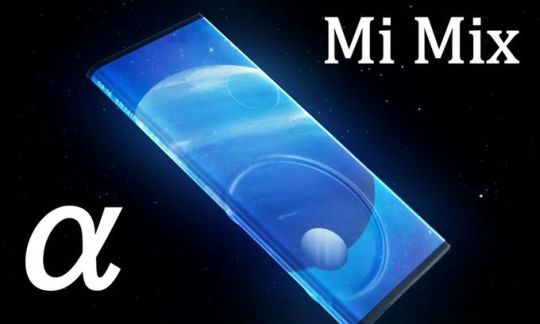
Today, more than 600 companies produce smartphones. However, almost 80% of the world market belongs to ten major manufacturers, including South Korean Samsung (19%) and LG (3%), American Apple (12%), Finnish Nokia (1%) and Chinese Huawei (13%, including Honor), Xiaomi (9%), Oppo (9%), Vivo (8%), Lenovo (3%, including Motorola), Tecno (1%).
As known, the Chinese Xiaomi Corporation was founded in 2010. During this time, the company has developed and released a huge number of models in almost all price segments. Some series, for example, Xiaomi Mi Note, were discontinued, having existed for several years. But others were more successful.
Xiaomi series line
1.Xiaomi Mi - the main, flagship line; 6-inch or more IPS, or AMOLED displays, 8-core Snapdragon 660, 845, 710, 712, 730, 855 and 855+.
2018 - Mi 6X, Mi 8, Mi 8 Lite, Mi 8 EE and Mi 8 SE;
2019 - Mi 9T, Mi 9 SE, Mi 9 and Mi 9 Pro 5G.
2.Xiaomi Mi Max - phablets; 6.9 - inch IPS, 8-core Snapdragon 636.
2018 - Mi Max 3.
3.Xiaomi Mi Mix - frameless design; 5.99 "IPS and 6.39" Super AMOLED, 8-core Snapdragon 845.
2018 - Mix 2S and Mix 3;
4.Xiaomi Mi A - without MIUI firmware, with Android One distribution and a minimum of pre-installed programs (only Google services). Up to 6 inches IPS or 6-inch AMOLED, 8-core Snapdragon 660, 625 and 665.
2018 - Mi A2 and Mi A2 Lite;
2019 - Mi A3.
5.Redmi is a budget segment; IPS up to 6 inches, 8-core Snapdragon 625, 8-core MediaTek Helio P22 or 4-core MediaTek Helio A22.
2018 - Redmi 5, 5 Plus, S2, 6, 6A, 6 Pro.
6.Redmi Note - Phablets; IPS from 6 inches, 8-core Snapdragon 636.
2018 - Redmi Note 5 and 6 Pro.
7.Redmi sub-brand - since 2019, the budget segment; IPS or AMOLED from 6.2 inches and above, 4-core Snapdragon 425 or 8-core Snapdragon 632, 660, 675, 730, 439.
2019 - Redmi GO, Redmi 7, Redmi Note 7, Redmi Note 7 Pro, Redmi K20, Redmi 8.
8.Black Shark - game series (liquid cooling system, screen with a refresh rate of 120 Hz, enhanced performance mode); 6-inch IPS, 6 or 6.4-inch AMOLED, 8-core Snapdragon 845 or 855.
2018 - Black Shark and Black Shark Helo;
2019 - Black Shark 2.
MIUI (MI User Interface)
Of course, the OS is one of the main components of a modern phone, providing most of its smart functionality. As known, since 2010 Xiaomi Inc has been developing open-source MIUI (MI User Interface) based on the Android OS.
This OS does not use the app menu. The first versions were developed using a startup based on Android 2.2.x Froyo and only supported the Chinese language.
After entering the international market, Xiaomi divided MIUI into local Chinese and international. The local version uses English and Chinese languages, and Chinese counterparts instead of Google services. The international version supports Google services and more than 40 languages. For nine years, the company has released 11 versions. The penultimate, MIUI 10 (10.4.5.0 latest stable release) version was released on May 31, 2018. On September 24, 2019, the company introduced the latest MIUI 11 (11.3.4.0 release) for Android 7.0 and up, including Android 10.

MIUI 11
The list of major changes:
- DC dimming.
Probably, DC dimming has become one of the main improvements of the new version. As known, adjusting the brightness of OLED matrices uses PWM (Pulse Width Modulation). Unfortunately, PWM causes the screen flicker when brightness decreases, which causes eye strain. In fact, this is one of the main disadvantages of modern AMOLED screens. Of course, the solution to this problem is a serious achievement. To reduce brightness, the algorithm reduces the voltage applied to the pixels, instead of frequency;
- interface - dark theme schedule, displaying the % battery charge, selecting MIUI or Android notifications, font size settings, a button for switching between camera modules, etc;
- a significant expansion of the assortment of sounds and their sets for notifications, mainly on the theme of nature (meowing, etc);
- Always On Display with dynamic animation;
- similar to Apple's AirPlay, MIUI 11 offers Cast from Xiaomi (support for transferring content to the screens of most modern Smart TVs without additional software or equipment);
- similar to Apple's AirDrop, data transfer to some other smartphones (Xiaomi, OPPO, Realme and Vivo).
Xiaomi Mi 9T and Xiaomi Mi 9 SE
The Xiaomi Mi 9T with a retractable front selfie camera offers a minimal flagship set.
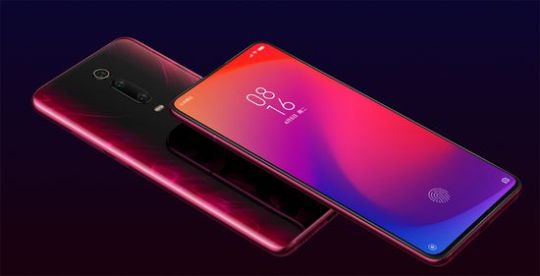
The model uses a 6.39-inch AMOLED display with 2340 x 1080 resolution (403 ppi), an 8-core Qualcomm Snapdragon 730 chipset (2 ARM Cortex-A76 with a frequency of up to 2.2 GHz and 6 ARM Cortex-A55 with a frequency of up to 1.8 GHz), RAM 6GB and 64/128GB. In addition, the model may well claim the status of a camera phone using a three-module camera (48 MP, 8 MP and 13 MP sensors) with f/1.75, f/2.40, f/2.40 aperture, LED flash, autofocus, macro mode and optical Zoom 2x. As usual, the front camera uses a 20 megapixel sensor.
In addition, a 4000 mAh battery provides a good battery life.
PROS
- good hardware platform;
- great main camera;
- retractable front camera;
- high battery life.
Cons
- does not support 4K @ 60 video recording;
- the average level of the unlock system.
Xiaomi Mi 9 SE is a compact version with a 5.97-inch Super AMOLED with 2340 x 1080 resolution (432 ppi).

MI 9 SE uses Snapdragon 712 (2 Kryo 360 clusters, including 2 Cortex-A75 with a frequency of 2.3 GHz and 6 Coretx-A55 with a frequency of up to 1.8 GHz), RAM 6GB and 64 / 128GB, NFC and fast charging.
The model also has a three-module camera (8MP Sony IMX586 Exmor RS + 8MP + 13MP) and a 20-megapixel front camera.
Xiaomi Mi 9
Xiaomi Mi 9 is a more performance phone. Like the Mi 9T, the model uses a 6.39-inch AMOLED display with 2340 x 1080 resolution (403 ppi), RAM 6GB and 128GB.
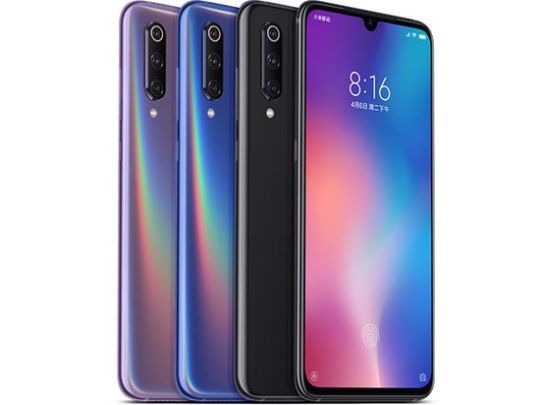
But the company equipped it with the more powerful Qualcomm Snapdragon 855 (8 Kryo 485, including Coretx-A76 up to 2.84 GHz + 512 KB cache, 3 Coretx-A76 (256 KB cache) up to 2.42 GHz and 4 Coretx-A55 up to 1.8 GHz).

As known, the first smartphones with Snapdragon 855, including Xiaomi Mi9, Samsung Galaxy S10, LG G8 and V50 were presented at MWC (Mobile World Congress) 2019.
In addition, Mi 9 uses an exellent three-module (48 MP + 16 MP + 12 MP) camera with f/1.75, f/2.20 and f/2.20 aperture and a 20-megapixel front camera.
PROS
- great hardware platform;
- excellent shooting quality;
- Qualcomm Quick Charge and wireless charging.
Cons
- high price;
- no optical stabilization;
- there is no protection against moisture.
Xiaomi Mi 9 Pro 5G
But in September, the company already introduced the Xiaomi Mi 9 Pro 5G.

This smartphone has the latest Snapdragon 855+ (2019) with a fast Prime Core that clocks up to 2.96 GHz (up from 2.84 GHz in the 855), three fast ARM Cortex-A76 performance cores, which can reach up to 2.42 GHz and four power-saving ARM Cortex-A55 cores that clock up to a maximum of 1.8 GHz. In AnTuTu, the result of Xiaomi Mi 9 Pro 5G reaches 480,830 points.
Its price is $ 520 for model with RAM 8GB and 128GB, $ 534 - 8/256GB, $ 577 - 12/256GB and $ 605 - 12/512GB.
The capacity of battery increased from 3300 to 4000 mAh. The model supports triple fast charging. Charging time for wired charging is 48 minutes; wireless charging provides 2000 mAh in 25 minutes. The smartphone also supports wireless reverse charging for other mobile devices.

But other components have not changed much. The Mi 9 Pro 5G uses a 6.39-inch Samsung Super AMOLED Full HD+ display with a maximum brightness of 600 nits, and a fingerprint sensor is integrated under the screen. The three-module camera has a 48 megapixel sensor (wide-angle lens with a viewing angle of 79° and an aperture of f/1.75), a 16 megapixel sensor (ultra wide-angle lens with an aperture of f/2.2 and a viewing angle of 117°) and 12 megapixel sensor with f/2, 2. Additionally, the model has a front-facing 20-megapixel camera with f/2.0.
Xiaomi Black Shark 2
In addition, in 2019, the company introduced the second generation of the gaming Black Shark smartphone.
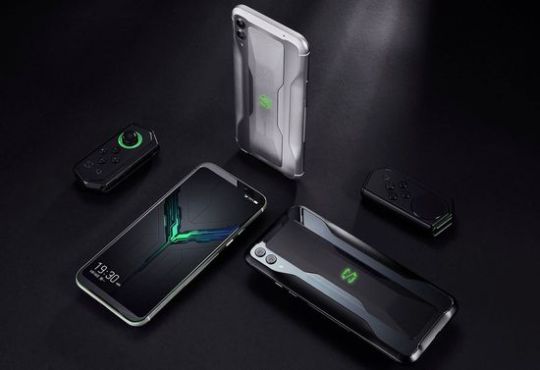
Xiaomi engineers managed to significantly improve the previous version. Firstly, Black Shark 2 uses an AMOLED matrix with an unprecedentedly low switching time for brightness levels and response of the sensor layer. Unfortunately, it does not support DC Dimming technology that eliminates screen flicker due to low frequency PWM. Secondly, the model uses an advanced liquid cooling system with a copper radiator and several layers of graphite film.
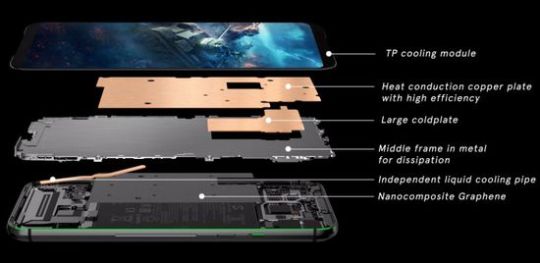
Unfortunately, it still heats up under prolonged high loads, but much less compared to Black Shark.
The model uses an 8-core Qualcomm Snapdragon 855. In addition, the smartphone has a 6.39-inch AMOLED display with 2340 x 1080 resolution (403 ppi), RAM 6GB, 128GB, a dual-module camera (48 MP + 12 MP) with f/1.75 and f/2.20 aperture and 20-megapixel front camera. Additionally, a 4000 mAh battery provides a good battery life.
PROS
- Snapdragon 855;
- very fast AMOLED matrix;
- gamer interface;
- Parental Control;
- optional gamepad.
Cons
- no DC Dimming technology;
- does not support memory cards;
- no NFC (Near Field Communication) module.
As known, the NFC module provides wireless data transmission at a short distance of up to 10 cm using a radio signal. The module practically does not consume energy and provides almost instant communication. Unfortunately, this protocol supports a rather low speed and limited amount of data. However, its popularity is growing rapidly.
Xiaomi Mi MIX Alpha
Of course, Xiaomi Mi Mix Alpha has become the most innovative phone in 2019. The area of its wrap-around screen reaches 180.6% of the body area. In fact, this unusual display is wrapped around the case.
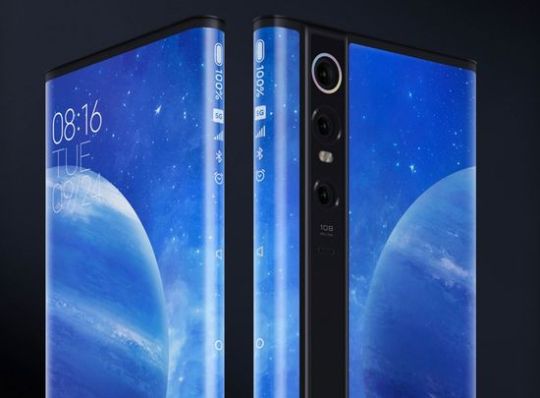
Its side faces are used to place touch buttons.
Of course, the camera with a 108-megapixel sensor (1/1.33-inch) was the second sensation of the model.
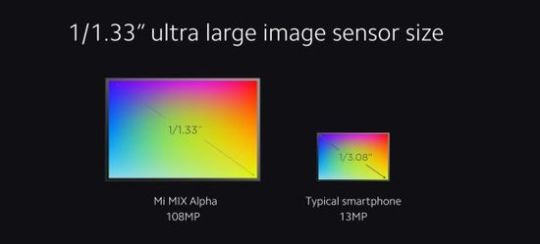
The camera also has an integrated optical image stabilization system. Lightweight and durable titanium alloy case provides a stylish design.
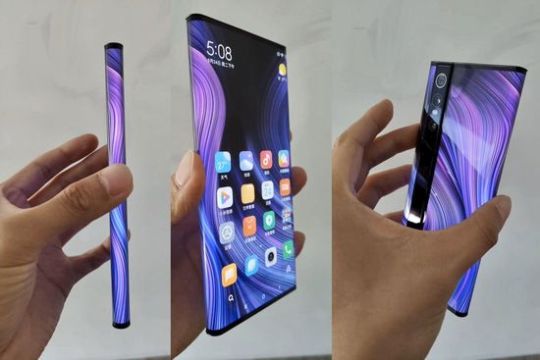
The rest of the specs also correspond to the highest level, including 5G, Snapdragon 855 Plus, RAM 12GB, 512GB, sound transmission technology via vibration of the screen surface, 4050 mAh battery, fast charge, etc.
Unfortunately, the preliminary price of the model reaches around $ 3,000.
Conclusion
More recently, consumer electronics from Chinese brands was mainly positioned in the budget or mid-budget segments due to the relatively low quality and innovative level. But in the past few years, the situation has changed radically. Chinese smartphones, TVs, projectors, robotic vacuum cleaners are increasingly successfully competing with the flagships of traditional leaders.
For example, many experts call Xiaomi Mi 9 Pro 5G one of the best models of 2019. In addition, Xiaomi Black Shark 2 successfully competes in the gaming segment. Moreover, Xiaomi Mi Mix Alpha rightfully claims to be the main innovative sensation of 2019. On the other hand, the price of Chinese brands also no longer refers to the budget segment.
Of course, Samsung, LG, and other traditional leaders are still leading in terms of reliability and service. But Xiaomi can press them on the innovative Olympus. Of course, this factor will significantly affect the choice of the optimal smartphone among high-tech fans.
This video shows a new Xiaomi Mi Mix Alpha phone with a unprecedented screen to body ratio (180,6%) and with a 108-megapixel sensor (1/1.33-inch).
Read the full article
#DCdimmingtechnology#MIUserInterface#MIUI11#Snapdragon855Plus#XiaomiBlackShark2#XiaomiMi9#XiaomiMi9Pro5G#XiaomiMi9SE#XiaomiMi9T#XiaomiMiMixAlpha#Xiaomiphones
0 notes
Photo

New Post has been published on https://magzoso.com/tech/poco-x2-review/
Poco X2 Review

Like many of its competitors, Xiaomi has spun the Poco sub-brand off into its own company, just in time for the launch of the Poco X2. The brand is of course well known because of the iconic Poco F1, but it has been well over a year since that model was launched. Poco is now on its own, though it will likely share many resources with Xiaomi for the foreseeable future. The new Poco X2 is sure to be noticed, however fans should be clear that this is not the next version of the Poco F1, and doesn’t follow the same formula at all. The Poco X2 is much more conventional and somewhat less path-breaking than its illustrious predecessor.
This phone isn’t made of plain plastic and isn’t trying to prioritise core specifications and raw power over everything else. Of course people are still expecting Poco to take the lead in terms of pricing, and to an extent, it does. Starting at just Rs. 15,999, the Poco X2 takes the Realme X2 (Review) on and somewhat overshadows the Redmi K20 (Review) as well as the Redmi Note 8 Pro (Review).
Will Poco set off another firestorm in the Indian market, and does this mark the beginning of a new era of competitiveness? We can’t wait to get started on our review to find out.
Poco X2 design
While the Poco F1 (Review) is unapologetically plain-looking and made of simple plastic in order to remain affordable, Poco is trying a different approach here. What we have is a bright, colourful glass rear with a gradient tone and an unusual circular design around the vertical camera strip. Our Atlantis Blue unit was lighter on the top and darker going down, but you can also choose Phoenix Red or Matrix Purple. There’s a Poco logo towards the bottom, and no “by Xiaomi” tag like the F1 had. The frame of the phone matches the colour of the lower one-third of the rear panel.
The main bit of design flair is the circular patch. You might think at first that Poco has gone with a raised camera module like what we’ve seen on the OnePlus 7T (Review) and Nokia 7.2 (Review), but it’s just a patch with a smooth finish while the glass around it looks frosted. Also, despite the fact that it’s quite flat, Poco has managed to make this patch reflective like a convex mirror, and we were somewhat able to frame a selfie taken with the rear camera. The vertical strip that actually houses the four cameras sticks out quite a bit and has slightly rough edges.
With a 6.67-inch screen, this is undoubtedly a large phone. The tall 20:9 aspect ratio helps with reachability and the non-slippery rear makes for a decent grip. It’s still difficult to get to all parts of the screen with a thumb though, making one-handed use potentially awkward. Your eye will be drawn to the wide dual-camera cutout in the upper right corner of the screen – it isn’t too noticeable in ordinary use, but definitely is a distraction when watching full-screen video.

The wide dual-camera cutout in the screen is quite noticeable
The power button on the right doubles as a fingerprint sensor, but it’s long and thin, which isn’t ideal. The fingerprint registration process took longer than usual, since the Poco X2 has to make sure it can work with just a narrow slice of your fingerprint. Left-handed users will find this placement awkward, and you’ll need to enrol at least two or three fingers so you can unlock the phone when it’s in your hand and on a table. The sensor is flush with the side of the phone which also meant we didn’t always line our fingers up with it perfectly.
The volume buttons are above the power button, which puts them slightly out of reach. There’s an infrared emitter on the top, like with many Xiaomi phones. Sadly, the tray on the left is of the hybrid variety so you’ll have to sacrifice a second SIM if you need a microSD card, and vice versa. There’s a 3.5mm audio socket, USB Type-C port, and speaker on the bottom.
Poco says it has used Gorilla Glass 5 for the front as well as rear of the X2. A clear transparent case comes with this phone and we’re glad to see there’s no pre-applied screen protector. You also get a SIM eject pin, a 27W charger, and a USB Type-C cable. The charger is one of the bulkiest we’ve ever seen.
Overall, it seems as though Poco wanted to create a distinct identity for the X2 and for itself as a brand. We’re not sure that all the design choices here are for the best, but this phone is at least unique and recognisable from the front as well as the back. We would have liked a neutral colour option, though.

The Poco X2 is available in three vibrant colour options
Poco X2 specifications and software
As we stated earlier, the Poco X2 should not be seen as the successor to the Poco F1, and as such it isn’t trying to offer a flagship-grade SoC at mid-range prices. You do get the Qualcomm Snapdragon 730G, which is pretty much the next best thing. This is the same chip that powers this phone’s primary competitor, the Realme X2, so we can assume that gaming and general-purpose performance will be solid.
You can buy the Poco X2 with 6GB of RAM and 64GB of storage for Rs. 15,999; 6GB of RAM and 128GB of storage for Rs. 16,999; or 8GB of RAM and a whopping 256GB of storage for Rs. 19,999. We have the top-end variant with us for review and if you choose this one, the hybrid dual-SIM tray won’t be much of a problem.
The 6.67-inch 2340×1080-pixel display has a killer feature to boast of – a 120Hz refresh rate. This is a subtle feature but it really does improve the quality of the usage experience, making the Android UI feel smooth and responsive. Poco calls this feature “RealityFlow” and it isn’t hard to see why. Games will benefit the most from this, but they have to explicitly support it and not a lot do yet. HDR-10 is also on the spec sheet.
There’s also a 4500mAh battery, dual VoLTE, Wi-Fi 802.11ac, Bluetooth 5, GPS, FM radio, and all the standard sensors. Interestingly, the design and specifications of the Poco X2 are practically identical to those of the Redmi K30 being sold in China. It will be interesting to see how the two brands segment and differentiate themselves if the Redmi K30 is launched here.

You’ll find a USB Type-C port, 3.5mm audio socket, and speaker on the bottom
Poco’s UI is identifed as Poco Launcher as well as MIUI 11.0.3 in different parts of the UI. It looks and feels like what we’ve seen recently on the Redmi K20 (Review) and Redmi K20 Pro (Review). It’s based on Android 10, and we have the December 2019 security update which is good to see.
Xiaomi’s software strategy has always been a point of contention and now Poco has inherited the same issues. There’s a lot of preloaded bloatware and we saw multiple annoying notifications each day asking us to download more through the company’s own GetApps store, or watch random celebrity-themed videos. There are also promotional messages on the lock screen, which you can disable. You’ll see ads and promoted content in many of the default apps. On the whole though, we noted that all this seems to have been toned down a little compared to what we’ve dealt with in the past.
Among the many preinstalled apps, you’ll find Mi Pay and Mi Credit, Xiaomi’s apps for UPI transactions and personal loans respectively. There’s are of course several redundant Mi apps including a Web browser, photo gallery and calendar, but some others such as Mi Remote, Themes, and Screen Recorder are useful. The third-party selection, including Helo, Gaana, Amazon Shopping, Dailyhunt, Opera, and more, are removable. The GetApps store will try to make you download plenty more, so be sure to look for the ‘Skip’ option.
There are plenty of UI customisation options. Not only is there now an app drawer, but it has tabs that filter various categories of apps for easy access. Nice touches include a search bar at the bottom of the drawer so you don’t have to stretch, and neatly grouped “Special features” in the Settings app. These features include the Game Turbo optimisation mode, Quick Reply panels for messaging apps, and Second Space for privacy.
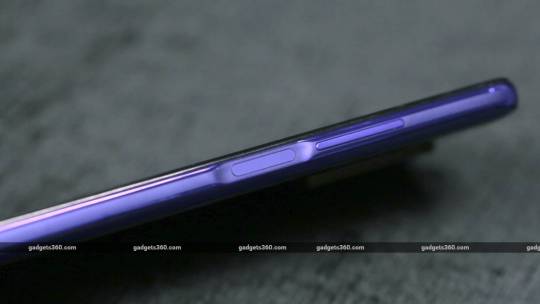
There’s a fingerprint sensor integrated into the power button on the left
Poco X2 performance and battery life
The Snapdragon 730G is no slouch, and the Poco X2 breezed through all our apps and usage scenarios. We did see some very slight stuttering in UI once or twice but it was only momentary. Multitasking was not a problem at all. Of course, this experience applies to the top-end variant that we are testing, which has 8GB of RAM. The only problem we had was stretching our thumbs to reach all parts of the screen. The phone didn’t get too hot in use either, and we only felt a mild warmth when playing games or using the cameras for a while.
The screen isn’t the most vivid or crisp, but it is fairly bright and engaging, and viewing angles are great. Whether or not the wide dual-camera hole annoys you will be a subjective matter – we found ourselves largely forgetting it was there when watching videos, but then suddenly being distracted by it when a bright scene came on. We also noticed a bit of backlight unevenness around the cutout.
You only get a single speaker on the bottom of this phone but it’s very loud and the sound is impressively deep and rich. Music distorts if the volume level is above 60 percent or so, but anything less than that is fine for personal listening.
A few of our benchmark tests were restricted from running on our pre-release review unit, but we do have some numbers to share. AnTuTu gave us a score of 2,80,912 which is very good. The Geekbench 5 single-core and multi-core scores were 548 and 1,759. 3DMark and GFXBench were both unable to run so we don’t have graphics scores, but we did run some of today’s more demanding games and got some real-world experience with the Poco X2.
PUBG Mobile defaulted to the High preset. The game was enjoyable and ran without any lag. Asphalt 9: Legends also worked very well, not stuttering even when we smashed headlong into other cars, which is typically a stressful visual effect.
We found the Poco X2’s battery life to be decent, and we didn’t feel any anxiety about getting through a full day, from morning to night. During that time we used the cameras quite a lot, played a few rounds of PUBG Mobile, streamed about an hour of video, and spent some time on social media apps. Our HD video loop test ran for 13 hours, 43 minutes, which is not a great result but might be influenced by how large the screen is.

The Poco X2 has four rear cameras including a 64-megapixel primary camera
Poco X2 cameras
The Poco X2 has four rear and two front cameras. The primary 64-megapixel rear camera has an f/1.89 aperture and uses the Sony IMX686 sensor which succeeds the widely used IMX586. There’s also an 8-megapixel f/2.2 ultra-wide camera, a 2-megapixel macro camera with a 2cm-10cm focal range as well as autofocus, and a 2-megapixel depth sensor. The primary selfie camera has a 20-megapixel resolution and is accompanied by a 2-megapixel depth sensor.
Poco’s camera app takes a little time to get used to. You have to use the zoom control to switch to the wide-angle camera (marked only as 0.6x) but going the other way to 2x performs a digital zoom since there’s no optical zoom capability. There’s a separate toggle button at the top for the macro camera. It’s a bit tedious to swipe through the mode selector which has a lot of options including 64-megapixel, Pro, Portait, Night, Short Video, and Slow Motion. Unfortunately, photos are branded with a Poco watermark by default, and we wish all manufacturers would stop doing this.


Poco X2 daytime camera samples (top: primary camera; bottom: ultra-wide camera), tap to see full-size
We very occasionally had trouble getting the primary camera to lock focus perfectly, and stepping back from our subject a bit often helped. Photos came out very well exposed with vibrant colours. When the composition allowed, there was very natural-looking depth of field. Fine details on objects such as flower petals came out well, as long as there was good natural light and they were in the centre of the frame. In shadowy areas and at the edges of daylight shots, details were somewhat lost and we did start seeing some grain.
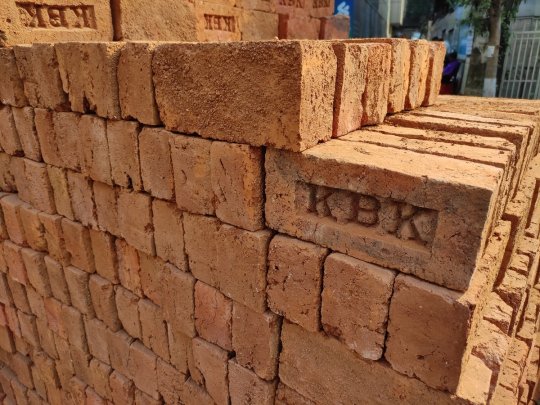

Poco X2 daytime camera samples, tap to see full-size
The wide-angle camera takes poorer quality shots, as expected, but were were happy to see that warping at the sides is minimal. Macros were completely washed-out and it was often hard to take a shot without the phone itself casting a shadow on our subjects.
Low-light shots were also relatively impressive though of course detail is not as well defined as during the day. You can get usable shots as long as there’s a little lighting around, whether indoors or out. The night mode does make a considerable difference and you don’t have to stand still too long. Using this brightens frames and shows details that would have been lost in the shadows.



Poco X2 low-light camera samples (top: primary camera; middle: Night Mode; bottom: ultra-wide camera), tap to see full-size
You can take portrait selfies and adjust a virtual aperture to vary the intensity of the depth effect. Edge detection is quite good too. However, the overall quality of photo taken with the front camera isn’t as impressive as we would have liked. Backgrounds were overblown in the daytime and details looked a bit artificial. It also takes too many taps and swipes to disable the default beautification.
As for video, we liked what the Poco X2 managed to capture in the daytime when recording at 1920×1080. Video was crisp with smooth motion tracking and reasonable stabilisation. Sadly, when we switched to 4K, colours became overexaggerated and there was a warm cast to the clips we recorded. At night, even mild motion caused severe shimmer and motion was quite jerky. Objects weren’t clearly discernible and bright lights caused exposure issues. 4K video shot at night was barely usable.


Poco X2 selfie camera samples (top: standard; bottom: Portrait mode), tap to see full-size
Verdict
Offering high-end specifications at rock-bottom prices is the simplest way to succeed in the Indian market, and Xiaomi has been one of the biggest forces here for years now. The Chinese giant constantly pushes out new models that raise the bar in terms of value, whether the focus is on style, battery life, cameras, specifications, or attention-grabbing features.
While the Poco X2 doesn’t have quite the impact that the Poco F1 did, it still does everything it needs to, and pricing is its main advantage. The Realme X2 (Review) and Redmi K20 (Review) have dominated the sub-Rs. 20,000 market of late and many recent models, such as the Oppo F15 (Review) and Vivo S1 Pro (Review) have simply not been able to match them in terms of power and features. Now, the Poco X2 makes all of them look a little worse in comparison.
The processor, RAM, storage, battery, and cameras are all strong, and there’s nothing to complain about in terms of build quality or the included accessories. We do, however, wish that the UI eased up on the bloatware and nagging notifications much more, and frankly the rear of the Poco X2 is a little too garish for our taste. Some people will also struggle with the sheer size of this device.
If cost is your main motivator, then the Poco X2 is the new obvious choice in its segment. That doesn’t mean that it’s a clear winner over the Realme X2 though, especially if you can find it at a discount, or if flash sales make the Poco X2 difficult to buy. If you’re undecided between these two models, you can expect a head-to-head comparison coming up on Gadgets 360 very soon.
0 notes
Text
WhatsApp Dark Mode Arrives, Samsung Galaxy Note 10 Lite Launched in India, and More Tech News This Week

The week past had its fair share of personal technology headlines, from WhatsApp finally gaining a dark mode (albeit in beta) to Samsung launching two of its ‘affordable' premium smartphones in the country – the Galaxy Note 10 Lite and Galaxy S10 Lite. The Oppo F15 – a mid-ranger from the Chinese smartphone company – went on sale in India this week, while Qualcomm used India as the setting for the launch of its new budget and mid-range smartphone processors. Xiaomi and HMD Global's Nokia brand also made headlines this week when the two companies cut prices of popular smartphones in their lineup, namely the Mi A3, Redmi K20 Pro, Redmi Go, Nokia 7.2, and Nokia 6.2. Read on for all the top tech news of the week past.WhatsApp dark mode finally availableFacebook-owned WhatsApp this week launched its ‘dark' theme, the much-awaited new feature. In a world where most apps now offer a dark mode, WhatsApp was one of the holdouts, despite being used by more than a billion people globally. Apart from being easier on the eyes in low-light environments, a dark mode would also be useful in extending battery life of your device if it features an OLED display panel.In a beta build for Android, the company has introduced the dark theme within settings. To use the feature, you will need to install the Android beta via the Google Play Beta testing programme. If you're unable to register for the programme, another method is sideloading the latest beta via APK Mirror. The feature was first spotted this week in v2.20.13, but dark mode can be observed in later beta builds as well – such as v2.20.16.We can expect WhatsApp dark mode to make its way to the stable Android app soon, apart from the iPhone app soon, and WhatsApp for Web. To use the feature in the previously mentioned Android beta builds, you'll need to visit Settings > Chats > Display > Theme. Here, you will find three options – System Default, Light, and Dark. The first, System Default, will switch between light and dark themes depending on what your current system-wide setting is on Android 10. The Light theme is the regular WhatsApp interface you've been seeing thus far. Dark mode will force a dark theme to the app regardless of the version of Android your device is running. At least in beta, it appears that WhatsApp has chosen to stick with a dark green colour for its dark mode.Samsung Galaxy Note 10 Lite, Galaxy S10 Lite launched in IndiaAs we'd mentioned, Samsung this week launched two of its recently unveiled affordable flagship smartphones in the country. The Samsung Galaxy Note 10 Lite and Galaxy S10 Lite were launched together globally earlier this month, and the smartphones we launched in India on two separate occasions this week. Both will only go on sale in the country from next month, and both run Android 10 with the company's One UI 2.0 interface on top.While the Galaxy Note 10 Lite runs off the 2018 flagship processor – the Exynos 9810 SoC used on the Galaxy Note 9 – it does bring the S Pen stylus the series is famed for. The Galaxy S10 Lite on the other hand runs on the Qualcomm Snapdragon 855 – last year's flagship SoC and a departure from the company's usual use of Exynos processors for its flagships in India.The Samsung Galaxy Note 10 Lite price in India starts from Rs. 38,999 for the 6GB RAM + 128GB storage variant, while the 8GB RAM + 128GB storage variant is priced at Rs. 40,999. It is currently up for pre-orders in the country, and will go on sale from February 3 via both online and offline retailers. The Samsung Galaxy S10 Lite price in India is set at Rs. 39,999 for the sole 8GB RAM + 128GB inbuilt storage variant. Its pre-orders are also open, and it will go on sale via Flipkart, Samsung.com, and offline stores from February 3.Specifications of the Samsung Galaxy Note 10 Lite include a 6.7-inch full-HD+ Infinity-O Display, a triple rear camera setup (12-megapixel main camera + 12-megapixel wide-angle camera + 12-megapixel telephoto lens), a 32-megapixel front camera, a 4,500mAh battery with Super-Fast charging tech, dimensions of 163.7 x 76.1 x 8.7mm, and a weight of 199 grams. It features an in-display fingerprint scanner, apart from the S Pen stylus that supports Bluetooth LE.On the other hand, specifications of the Samsung Galaxy S10 Lite include a 6.7-inch full-HD+ Infinity-O Display, a triple camera setup (48-megapixel main camera + 12-megapixel ultra-wide-angle camera + 5-megapixel macro camera), a 32-megapixel selfie camera, a 4,500mAh battery with Super-Fast charging tech, an in-display fingerprint sensor, dimensions of 162.5x75.6x8.1mm, and a weight of 186 grams.Samsung Galaxy A51, Galaxy A71 India launch leaksOn a related note, Samsung has been anticipated to refresh its Galaxy A-series lineup in India, bringing the recently unveiled Galaxy A51 and Galaxy A71 handsets to the country. The latest round of leaks pertaining to their India launch have tipped their prices and expected release dates. To recall, the Samsung Galaxy A51 and Galaxy A71 were launched in December, with the former making its way to Vietnam at the time, and the latter unveiled without price or availability.As per a recent set of leaks, the Samsung Galaxy A51 and Galaxy A71 will be launched in India in late-January, which means sometime next week, and the second week of February, respectively. Both smartphones are said to go on sale in the country from mid-February. That the smartphones' India launch is indeed due, is not news, as the company has had them listed on the country-specific for a while now.The Samsung Galaxy A51 is said to be priced under Rs. 30,000, which fits in with an earlier report that tipped a Rs. 22,990 launch price. The Samsung Galaxy A71 on the other hand is said to be priced at Rs. 29,990. Highlight features of both phones include Infinity-O Displays and quad rear camera setups, apart from running the latest Android 10 build with the company's One UI 2.0 skin atop.Oppo F15 first sale in IndiaThe Oppo F15 (Review) was launched last week in India, priced at Rs. 19,990 for its lone 8GB RAM + 128GB inbuilt storage variant. The mid-range smartphone went on sale for the first time in the country in the week just past, being made available via both Amazon and Flipkart, apart from the Oppo online store as well as offline retailers in the country.On sale in the country since Friday, January 24, the Oppo F15 runs ColorOS 6.1.2 based on Android 9 Pie, and other specifications include a 6.4-inch full-HD+ display, an in-display fingerprint sensor, a MediaTek Helio P70 (MT6771V) SoC, a quad rear camera (48-megapixel + 8-megapixel + 2-megapixel + 2-megapixel), a 16-megapixel selfie camera, apart from a 4,000mAh battery. Qualcomm Snapdragon SoCs launchQualcomm this week launched three brand new mobile processors, holding an event in New Delhi for the purpose. All three SoCs – the Qualcomm Snapdragon 720G, Snapdragon 662, and Snapdragon 460 – feature support for Wi-Fi 6, Bluetooth v5.1, as well as ISRO's NavIC navigation system. Alongside, Realme and Xiaomi both announced they will soon be launching the first Snapdragon 720G smartphones.Smartphones running the Snapdragon 662 and Snapdragon 460 SoCs will only arrive by the end of 2020. Part of its recently established lineup of gaming-focused smartphone chips, the Snapdragon 720G is an octa-core SoC based on the 8nm process technology, with two Cortex-A76 cores at 2.3GHz and six Cortex-A55 cores at 1.8GHz, along with new Adreno 618 GPU.The Snapdragon 662 SoC is also an octa-core SoC with four Cortex-A73 cores at 2GHz and four Cortex-A53 cores at 1.8GHz, coupled with the Adreno 610 GPU. Another highlight is support for Qualcomm Quick Charge 3.0. The Snapdragon 460 SoC also features Quick Charge 3.0 support.Huawei Band 4 fitness tracker launched in IndiaChinese telecommunications giant Huawei this week launched a new fitness band in India, the Huawei Band 4. Featuring a heart rate monitor and sleep disorder diagnosis at an affordable price of Rs. 1,999, the activity tracker generated quite a lot of interest amongst Gadgets 360 readers. To recall, the smart band had first been unveiled in China back in October last year, and is only now making its way to India.Specifications and features of the Huawei Band 4 include a 0.96-inch colour display; nine exercise modes such as running, cycling, walking, rowing; an optical heart rate sensor for 24x7 heart rate monitoring; Huawei TruSleep 2.0 tech to detect up to six types of sleep disorders; a 91mAh battery said to deliver up to 9 days of usage; Android and iOS compatibility, and a weight of 24 grams.Xiaomi Mi A3, Redmi K30, and Redmi Go price in India slashedThe Xiaomi Mi A3 was launched in India in in August last year, priced starting at Rs. 12,999 for its 4GB RAM + 64GB storage model and Rs. 15,999 for its 6GB RAM + 128GB storage model. Now, its price in the country has been slashed Rs. 1,000 to start at Rs. 11,199, while its top model is priced at Rs. 14,999.After numerous discounts offered on the Redmi K20 Pro in the recent past, in and outside of sales, Xiaomi has finally officially cut the price of the smartphone in the country. The Redmi K20 Pro price in India now starts at Rs. 24,999 for the 6GB + 64GB model, going up to Rs. 27,999 for the 8GB + 256GB model, representing a price cut of Rs. 1,000 from previous prices. Finally, the Redmi Go is now priced starting at Rs. 4,299 for its 8GB storage variant, and Rs. 4,499 for its 16GB storage variant.Nokia 7.2 and Nokia 6.2 price in India cutHMD Global this week announced price cuts on the Nokia 7.2 and Nokia 6.2 in India, up to Rs. 3,500. Both smartphones are part of the Google Android One programme, which means they are certified to have an optimised experience apart from receiving speedy updates. To recall, the Nokia 6.2 was launched in India last year in October at Rs. 15,999, and with the latest price cut, is now available at Rs. 12,499.The Nokia 7.2 on the other hand launched in September last year, priced starting at Rs. 18,599. With the latest price revision, the Nokia 7.2 is now priced at Rs. 15,499 for the 4GB RAM + 64GB storage variant, while the 6GB RAM + 64GB storage model is now priced at Rs. 17,099.BSNL revises plans, Tata Sky HD set-top box discount, and other telecom newsBharat Sanchar Nigam Limited (BSNL) this week revised its Rs. 1,999 plan to offer 71 days of increased validity in a republic day offer. The offer is valid until February 15, and gives the plan a validity of 436 days instead of its regular 365 days. Next, BSNL also revised its Rs. 1,188 prepaid plan to reduced its validity to 300 days, down from 365 days. The Mathuram plan will be available to buy until March 31 under an extension.Also this week Vodafone unveiled two new prepaid plans - Rs. 558, Rs. 398 – both of which offer 3GB daily data and unlimited calls. Rs. 558 prepaid plan offers 56 days of validity, whereas the Rs. 398 offers 28 days of validity. The Rs. 558 plan is available in the Madhya Pradesh circle only for now, whereas the Rs. 398 prepaid plan is available in Mumbai in addition. Alongside, the Rs. 19 prepaid plan has also been revised to offer 200MB of data, instead of 150MB.Finally, the Tata Sky HD set-top box price has been slashed by Rs. 100, and it is now priced at Rs. 1,399. The discount is under a special offer on the Tata Sky website, and it brings the price down to the same as the SD set-top box. It remains unclear until when the special offer will be available.
Read the full article
#1technews#0technologydrive#057technology#0dbtechnology#0gtechnology#1technologycourtpullenvale#1technologydr#1technologydrive#1technologydrivemilpitas#1technologydrivemilpitasca95035#1technologydrivepeabodyma#1technologyplace#1technologyplacerocklandma#1technologywaynorwoodma#2technologydrive#2technologydrivestauntonva24401#2technologydrivewarana#2technologydrivewarrennj#2technologydrivewestboroughma01581#2technologyplace#2technologyplacemacquarie#2technologywaynorwoodma#2000stechnology#3technologybets#3technologybetsgenpact#3technologycircuithallam#3technologydrive#3technologydrivemilpitasca95035#3technologydrivepeabodyma#3technologyltd
0 notes
Text
Redmi K30 Pro Price in India, Specifications, Launch Date and Reviews
Xiaomi Redmi K30 Pro is a Mid-range smartphone offering that accompanies a totally bezel-less and no-score show. The earlier launched Xiaomi’s Redmi K20 and K20 Pro are some of the best premium features offering smartphones. These phones are good at the price of above Rs 20,000 but not so successful even with a premium combination of design and hardware. Here in this post, we will discuss Redmi K30 Pro Price in India, Specification and Launch date. According to a tip, it is expected that Redmi K30 Pro will be unveiled in 2020 but K30 in this year’s end. It is very strange that Xiaomi is thinking to launch K30 and K30 Pro but it is just a leak and Xiaomi has already confirmed that they are working on Redmi K30.
Redmi K30 Pro Specifications:
Xiaomi Redmi K30 Pro parades a scene show that is 6.39-inch tall. It bears screen goals of 2,340 * 1,080 pixels alongside a pixel thickness of 403 PPI. be that as it may, there is no screen assurance over the AMOLED show. For the optics, the device has a 64MP + 8MP +2MP back focal points that can catch astonishing pictures with a sharp and splendid completion. At the front, there is a 24MP focal point which can likewise catch eminent selfies with nitty-gritty completion. Xiaomi Redmi K30 Pro is outfitted with a Qualcomm Snapdragon 855 plus chipset which offers productive execution. There is an Octa-center processor that tickers up to 2.96GHz speed. It is combined with an Adreno 640 GPU that offers the heap of the processor while the 8GB RAM keeps the capacities and foundation undertakings easily streaming. to keep the smartphone running, a one-time full charging is sufficient for the 4,500mAh Li-particle battery. for a brief timeframe topping off, it additionally gets Fast charging innovation. Xiaomi Redmi K30 pro houses a 128GB non-expandable stockpiling. In spite of the absence of development, the inside memory is gigantic to keep every one of the document and information. Connectivity device features Wifi, 2G,3G, VoLTE(works with Jio), 4G LTE (India Compatible), Bluetooth, USB Type-C, GPS and Mobile Hotspot and Sensor Features Accelerometer, Magnetometer, Ambient Light, Gyroscope, Proximity Sensor, etc.
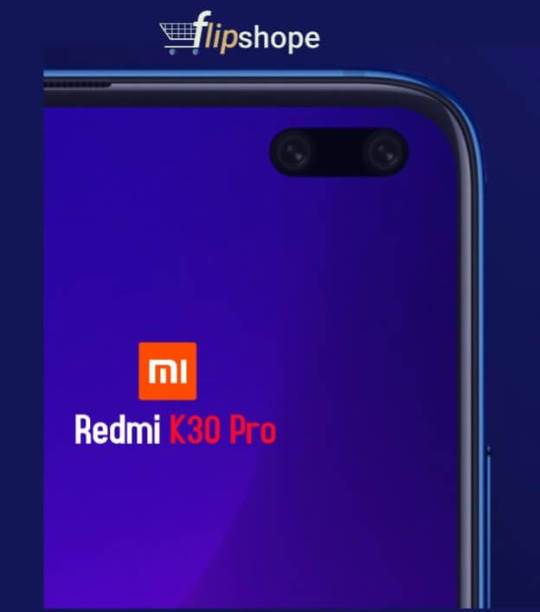
Redmi K30 Pro Price in India:
The Redmi K30 Pro launch date is expected in 2020. Talking about expected Redmi K30 Pro Price in India it will be Rs 31,999.
0 notes
Text
Best Android Phones in 2019, will you like to purchase?
After a sluggish few years in the Android world, 2019 has been a smash-hit for smartphone fans. We’ve already seen a few interesting phones with foldable designs, punch-hole displays, and as many as six cameras. These include the Samsung Galaxy S10, OnePlus 7 Pro, Huawei P30 Pro, Nokia 9 PureView, and many more.
But the year is still far from over. If you want to know more about the handsets you can look forward to, check out our list of the best upcoming Android phones arriving in 2019.
Best Android Phones in 2019
Pocophone F2
LG G8X
Google Pixel 4 series
Huawei Mate 30 Pro
Motorola Razr foldable phone
Xiaomi Mi Mix 4
OnePlus 7T
1. Pocophone F2

Xiaomi made headlines last year with the announcement of the Pocophone F1. The reason why was that the phone offered fantastic value for money. Starting at just 330 euros (~$370), it featured the Snapdragon 845 chipset, 6GB of RAM, a massive battery, and a dual-camera setup at the back.
This year, we expect the company to release its successor — the “Pocophone F2.” Nothing about the phone has been made official yet (including the name), but we expect it to follow the same recipe that made the F1 so successful. That means offering high-end specs at a price-point that undercuts the competition by a wide margin.
The Pocophone F2 is expected to offer a fantastic price-performance ratio.
We also hope the phone will come with NFC, a better design, and a few other things you can check out in our Pocophone F2 wishlist post.
The main problem is Xiaomi itself since it released the Redmi K20 Pro. The phone turned out to be the cheap Snapdragon 855 device Xiaomi fans have been waiting for. We don’t know where this leaves the Pocophone F2, but here’s hoping it’ll be a tweaked version for the global market.
Launch ETA: Sometime in 2019
LG G8X

What we thought was the next LG V-series smartphone might turn out to be the rumored LG G8Xinstead.
Tipped to be a revamp of the lukewarm LG G8, the G8X reportedly features a dual rear camera setup, waterdrop notch, headphone jack, and an extra hardware button. Expected features include wireless charging, quad DAC audio, and some level of water and dust resistance.
We don’t see a rear or front fingerprint sensor, which means the phone might offer an in-display fingerprint sensor. Also not seen is the G8’s Z Camera (3D ToF camera). The sensor-enabled features like 3D face unlock, hand ID, and advanced gesture controls. That said, we don’t know if many people will notice or care — our own Eric Zeman though hand ID and gesture controls were “slow and unreliable” in his G8 review.
LG didn’t confirm or deny the G8X’s existence but hinted there are some truths to the leaks. LG will hold an event during IFA 2019 in Germany, so we should learn more then.
Launch date: September
3. Google Pixel 4 series

The Google Pixel 4 series, which will likely consist of the Google Pixel 4 and 4 XL, is expected to make its debut in October. As we’re still months away from their release, Google hasn’t revealed much information. However, it has confirmed the phones exist and even showed off the rear design and camera after tweeting out an official picture in response to leaks and renders.
Google also confirmed two Pixel 4 features: Motion Sense and Face Unlock. Motion Sense uses the phone’s onboard Soli motion-sensing radar to enable hand gestures. That means you can wave your hand across the front of the Pixel 4 to skip songs, snooze alarms, and silence incoming calls, with additional functions arriving later.
Face Unlock also uses Soli, this time to turn on the Pixel 4’s face unlock sensors. Combined with software algorithms, the Pixel 4 supposedly opens as soon as you pick it up. Face Unlock works in almost any orientation and can also be used to authenticate payments and apps.
Thanks to a massive spec dump, we have a better idea of what to expect with the Pixel 4 on paper. Whereas the Pixel 4 reportedly features a 5.7-inch Full HD+ display, the Pixel 4 XL reportedly sports a 6.3-inch Quad HD+ display. Both AMOLED displays will have a 90Hz refresh rate, according to leaks.
Other rumored specs include a 2,800mAh battery for the Pixel 4, a 3,700mAh battery for the Pixel 4 XL, 6GB of RAM, at least 64GB of storage, the Snapdragon 855 chipset, stereo speakers, and dual rear 12MP and 16MP cameras. Finally, the Pixel 4 phones are expected to run Android Q.
Launch ETA: October
Huawei Mate 30 Pro

Huawei announced the P30 Pro in March, which means the next flagship from the company to expect is the Mate 30 Pro. Huawei confirmed the Mate 30 Pro will launch in September or October.
Leaks have been few and small, but what we’ve heard so far sounds very promising. According to rumors, the Mate 30 Pro will feature a 6.71-inch AMOLED display with a 90Hz refresh rate. The phone will also reportedly feature the Kirin 985 processor, Balong 5000 modem for 5G connectivity, two 40MP rear cameras with a third telephoto sensor, a 4,200mAh battery, and fast wired and wireless charging.
We also expect improvements to the in-display fingerprint sensor and reverse wireless charging, along with Android Q underneath EMUI 10.
There’s a good chance the phone will feature a price bump relative to the Mate 20 Pro, with the base storage variant of the phone likely costing more than 1,000 euros (~$1,115). Then again, the company has also released a non-Pro Mate phone in recent years, so hopefully, that offers a similar core experience at a cheaper price.
Launch ETA: September or October
MotorolaRazrfoldable phone
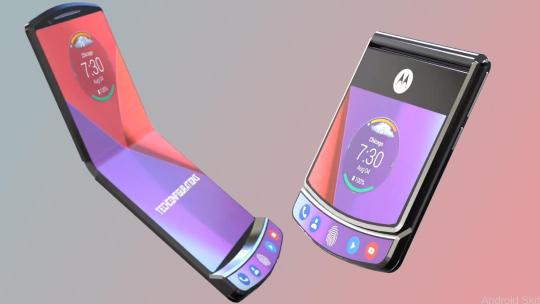
It looks like Motorola plans on bringing back the Razr series. The company is reportedly working on a foldable phone, which is expected to launch sometime this year. An exact date isn’t known, but the company said it plans to enter the market around the same time as its competitors. Samsung and Huawei have already revealed their foldable phones (although they aren’t available to buy), so Motorola can’t be far behind.
The Motorola Razr foldable phone (the name hasn’t been confirmed yet) reportedly folds vertically and features two displays. Based on a previous patent filing and firmware digging, it features a small display on the outside when closed and a larger display when opened.
Specs-wise rumors state that it will be a mid-range device sporting the Snapdragon 710 chipset, up to 6GB of RAM, and a 2,730mAh battery. It may cost as much as $1,500, but we won’t know for sure until it’s officially released. In the U.S., it may be Verizon-exclusive.
Launch ETA: Sometime in 2019
Xiaomi Mi Mix 4

Xiaomi has generally launched an all-new Mi Mix device in the second half of the year, with the Mi Mix 3 launching in October 2018 and the Mi Mix 2 being unveiled in September 2017.
Aside from Xiaomi’s traditional timing, confirmation of the Mi Mix 4 reportedly came via a Weibo post from company executive Wang Teng. The now-deleted post apparently noted that the new Xiaomi phone will have a camera that’s better than Samsung’s 64MP sensor.
Staying with the camera experience, a Xiaomi patent filing reveals the company is working on a periscope camera. Furthermore, the source of the news says it’s not out of the question for the tech to come to the Mi Mix series. In any event, we’re expecting the Snapdragon 855 chipset and a rather slick design (will it be a slider again?).
Launch ETA: Sometime in 2019
OnePlus 7T

There haven’t been any significant rumors or leaks regarding a OnePlus 7T, but past years suggest that this could be the case. OnePlus has traditionally launched a T-series phone in the second half of the year, going all the way back to the OnePlus 3T in 2016.
This schedule might be in question after the company launched the OnePlus 7 and OnePlus 7 Pro back in May — bucking the trend of one phone for each half of the year. But what if the company does indeed go ahead with a T series entry in 2019?
It’s possible OnePlus will offer a OnePlus 7T and a OnePlus 7T Pro if it decides to issue new devices in the second half of the year. As for desired features, we’d love to see both variants offer camera quality on par with the likes of Samsung and Huawei, for starters.
A standard OnePlus 7T should also offer a more versatile rear camera setup, as opposed to simply adding a 5MP depth sensor. As for a OnePlus 7T Pro? We’d like to see a proper IP rating, wireless charging, and improved endurance.
Interestingly, OnePlus confirmed it’ll release a second 5G smartphone by the end of 2019. Even better, the phone will be available globally instead of in a few regions. Maybe one of the rumors 7T devices might be a global 5G phone.
Launch ETA: Sometime in late 2019
Android phones yet to be released
The handsets below have already been announced, but since they haven’t gone on sale yet we’re still including them on our list of the best upcoming Android phones.
8. Samsung Galaxy Fold

Announced in February, the Galaxy Fold is Samsung’s first foldable device. It opens and closes like a book and features a 4.6-inch display on the outside and a 7.3-inch screen on the inside. The phone has six cameras on board, is powered by the Snapdragon 855 chipset, and is 5G ready. It was initially scheduled to go on sale on April 26, but Samsung pushed back the launch date due to problems with the phone’s display.
Thankfully, Samsung seemingly resolved those issues and will re-launch the Galaxy Fold in September. However, the phone’s prospects are a bit murkier this time around — T-Mobile confirmed it will not carry the Galaxy Fold, with an AT&T launch still up in the air.
Huawei Mate X
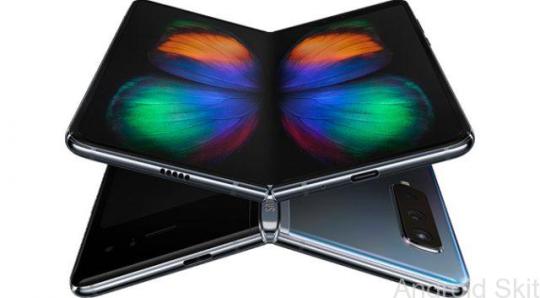
Huawei’s rival to the Galaxy Fold made its debut at MWC 2019. It features a single display that’s wrapped around the outside of the device and measures 8-inches when in tablet mode. The 5G phone is powered by the Kirin 980 chipset, sports a rear triple-camera setup, and has a side-mounted fingerprint scanner.
However, Huawei has yet to pin down a launch date. The company confirmed the Mate X will launch sometime between September and November, even though a report pegged a pre-November as “unlikely.” Whenever the phone launches, the 8GB/512GB version will retail for a staggering 2,299 euros (~$2,550). The phone isn’t expected to launch in the U.S.
Read the full article
0 notes
Video
youtube
Smart Minds
https://youtube.com/playlist?list=PLP8MtbY8Spq8N6ZOgXJw-VRX_4vCm1iYA
Here in this play list we have grouped all the videos of our channel Infotainment which makes your digital life simpler and easier.
How To Properly Upload Videos To YouTube From PC or Laptop
How To Change Language In whatsApp keyboard
How To Use Gmail Properly [2020] (Complete Tutorial)
How to Share Product Link from Amazon App
How to Wrap Text in Excel [2020] (3 easy methods)
How to use Amazon prime video app
How to Measure with Mobile | best measurement app
How to Disable Incoming Calls But not Data
how to order in bigbasket
How To Order On Amazon [2020] - Full Step-By-Step Buying Tutorial For Beginners
how to use urbanclap app step by step | Urban Company app
Subreddit icon banner and color change
What is Google Discover ? (V Important) How to Turn On/Off Google Discover on Android
How To Create Whatsapp Group ? 2020 [Very Simple]
How To Create Amazon Wish List
How To Do Cash On Delivery In Big Basket | bigbasket main kaise cash on delivery kare
Amazon Pay Balance Wallet - How to add Money in Amazon Pay Balance?
CRED App- How to get Free Rewards just Paying Credit Card Bills | Redeem Cred Reward Point
roposo app how to use
How to download free books from play books
What is Zen Mode on OnePlus Phone- How to Use it
How to Get Pan Card in Just 10 Minutes | How to Apply Pan Card Online Free
how to change date format in windows 10 and excel dd/mm/yyyy
how to recharge idea sim online
How to do Web Check In Easily| Print Boarding Pass (Hindi) New Rules I Baggage Tag I Indigo
How to get SHOT ON watermark on your smartphone camera photos
How To Purchase Books On Google Play Books.
how to copy excel sheet to another excel file with same layout and format
How To Lock Facebook Profile
Best Test wins under Dhoni Captaincy
How to Set Finger Print Lock On Display in Redmi K20 Pro | Smart Minds
How to Pay Credit Card Bill from Amazon app And get Cash Back
How to Check Bank balance in Cred App [Very Simple]
How to pay postpaid mobile bill (In Hindi)
Video Conference Call Etiquette For Those Who Work From Home
how to fix sim card not Detected in phone (5 Easy Ways)
Different Amazon Payment Methods | How To Make Payment on Amazon App
Calculate Percentage in Calculator of mobile
Seagate Backup Plus Portable 5TB Unboxing
How To Use A Pulse Oximeter Properly?
Lock and Unlock Your Android Phone by DOUBLE TAP
How to find mails by size in Gmail
samsung galaxy tab A 10.1 Unboxing and First Impressions (2020)
Benefits Of Amazon Prime Membership [7 benefits] in Hindi
How to Change Wallpaper in your Phone (Android)
how to turn on roaming on android
How to use and customize Quick Access Toolbar in Excel
How to Unsend a Sent Email in Gmail (Thank Me Later)
How to Switch Between Applications in a Second?
how to track your order on amazon
(2021)How to Subscribe For Amazon Prime Membership (in Hindi) -| Amazon
How to pay LIC premium online Through Mobile| LIC Premium Online Payment | LIC Premium pay online
boAt Airdopes 441 Wireless Earbuds Unboxing & Review [2020]
How to Hide Files/Photos in Android Phone (Very Easy)
Myntra | How to buy clothes on Myntra |
Windows 10 - How to Disable Startup Programs | How to Disable Startup Programs in Windows 10
How To Change UPI Pin In Google Pay
How To Use Telegram Secret Chat | Keep your chat secret with telegram secret chat
infrared thermometer how to use
WhatsApp Disappearing Message | WhatsApp Disappearing Messages Kaise Use Kare
How To Prevent Someone From Adding You On Whatsapp Group 2020 [Extremely Useful]
How To FIX Bluetooth Device Not Working On Windows 10 (Easy Steps)
How to Delete Browsing History Android | Browser History Kaise Delete Kare
How to Use Snipping Tool Correctly (4 Amazing Ways)
Greatest Cricket World Cup Upsets
How to SET WHATSAPP FINGERPRINT LOCK on Android
How To Free Up Storage In Whatsapp | Whatsapp New Features
How to increase HDFC credit card limit online through internet banking
How To Reopen Recently Closed Tab In Google Chrome.
Zomato Me Order Kaise Kare [New] | How to Order Food In Zomato (in hindi)
How To Randomize Data In Excel ? Smartminds
How to Set Up Signal | Signal App Use
How To Check IMEI Number In Your Mobile | Smart Min
#paytm
#laptopconnections
#mobiletipsandtricks
#smartphone
#digitalindia
#digitaltransformation
#zomato
#youtube
#android
#excel
#smartphones
#facebook
#whatsapp
#webex
#amazon
#amazontutorials
#whatsapptutorials
#facebooktutorials
#googlepay
#googlepaytutorials
#flipkart
#bigbasket
#bigbaskettutorials
#twitter
#twittertutorials
#reddit
#reddittutorials
#msword
#telegram
#telegramtutorials
#instagram
#instagramtutorials
#zoom
#zoomtutorials
#OLX
#olxtutorials
#urbanclap
#urbanclaptutorials
#windows
#windowstutorials
#oneplus
#android
#androidtutorials
#cameras
#apps
#phonepe
#phonepetutorials
#dakpay
#creditcard
#cred
#signal
#myntra
#bluetooth
#webcheckin
#videoconference
0 notes
Text
Xiaomi could soon launch three new Mi 10T phones globally August 27, 2020 at 01:00PM
Xiaomi is expected to launch the Mi 10T series soon.
There could be three new phones in the lineup.
The Xiaomi Mi 10T Pro has also appeared in renders and live images.
Last year, Xiaomi launched the Mi 9T and Mi 9T Pro globally as rebranded versions of the Redmi K20 and Redmi K20 Pro. This year, we’ve already witnessed the launch of the Redmi K30 series, but there’s been no word on Mi 9T successors for global markets. That changes today as the Xiaomi Mi 10T series has appeared in multiple leaks.
Folks over at XDA Developers spotted the first live images of the alleged Mi 10T Pro on an online mobile marketplace called OfferUp. The listing was for a “brand new phone” from Xiaomi with the codename “apollo” and model number M2007J3SG. An XDA member later uncovered code in the latest MIUI 12 beta linking this and similar model numbers to the Xiaomi Mi 10T and Xiaomi Mi 10T Pro.
After some more digging, the publication found evidence of the codename “apollo” in Xiaomi’s camera app. They were able to determine that the standard model in the Mi 10T series has a 64MP triple camera setup, while the Pro model also has a triple camera array led by a 108MP shooter. The code also suggests that the series will have global as well as Indian variants. You can see the possible live images of the Mi 10T Pro found in the OfferUp listing below.
More evidence for Xiaomi Mi 10T series
Corroborating the information above, tipster Abhishek Yadav also outed the specs of the alleged Xiaomi Mi 10T Pro on Twitter alongside a render of the phone that resembles the live images above.
According to Yadav, the Mi 10T series comprises three phones: Mi 10T, Mi 10T Pro, and Mi 10T Lite. As for the Pro model, the leaker suggests that the phone will get a large 5,000mAh battery, a display with a 144Hz refresh rate, a 108MP primary camera, and possibly a side-mounted fingerprint sensor.
Credit: Abhishek Yadav/Twitter
As you can see, a lot of specs are missing from this list, including details about the phone’s processor. But from what we can see, the phone doesn’t appear to be a rebranded Redmi K30 or any other device in the K30 series.
Firstly, its vertical rear camera design is clearly associated with other phones in the Mi 10 series in contrast to the round camera housing on all Redmi K30 phones. Secondly, leaked specs of the Mi 10T Pro don’t match any Redmi K30 phone launched till now, the latest one being the Redmi K30 Ultra. You can see the leaked render of the Mi 10T Pro below.
Credit: Abhishek Yadav/Xiaomi
Yadav claims that the new series will launch soon — possibly in the next “10-20 days” — and we’re hoping to hear more about it in the coming days.
Also read: Xiaomi Mi 10 Pro review: Delivering the goods
Source:- Android Authority https://ift.tt/3jbfQoy
from Blogger http://freepcsoftwarehub.blogspot.com/2020/08/xiaomi-could-soon-launch-three-new-mi.html
0 notes
Text
Redmi officially released a new flagship model designed to commemorate Xiaomi’s 10th anniversary- Redmi K30 Extreme Commemorative Edition. Redmi K30 Extreme Commemorative Edition has flagship hardware configuration, including Dimensity 1000+ processing chip, top E3 material high refresh rate AMOLED screen, super large VC liquid cooling, 4500mAh battery, and 64 Megapixels full scene ultra-clear four-camera The luxurious configuration inside can also support SA/NSA 5G dual-module network, 5G dual card dual standby, and Wi-Fi 6 network standards.
Redmi K30 Extreme Commemorative Edition 6+128GB version is priced at 1999 yuan, 8+128GB version is priced at 2199 yuan, 8+256GB is priced at 2499 yuan, 8+512GB is priced at 2699 yuan, and the first release discount is 2499 yuan.
Unboxing
“Ten Years of Tribute” extra-large carton (media edition, non-retail packaging). From this detail, we can see that Redmi has become the orthodox inheritor of Xiaomi mobile phones that insisted on the ultimate cost-effectiveness.
The first generation of Xiaomi mobile phones-“The undead Android is a good toy Xiaomi mobile phone review ”
Xiaomi has specially reserved and bound the ” Evaluation of a Good Toy Xiaomi Mobile Phone ” written by us nine years ago. Looking at the work written by Teacher Yonghui back then, it is still in the era of Android 2.3, with a simple and original interface, which has a sense of age.
Redmi K30 Extreme Edition Design & Appearance
#gallery-0-4 { margin: auto; } #gallery-0-4 .gallery-item { float: left; margin-top: 10px; text-align: center; width: 50%; } #gallery-0-4 img { border: 2px solid #cfcfcf; } #gallery-0-4 .gallery-caption { margin-left: 0; } /* see gallery_shortcode() in wp-includes/media.php */
The Redmi K30 Extreme Commemorative Edition is still a rare 5G flagship with a true full screen.
The quality of this screen is quite good, a 6.67-inch pop-up full screen, a resolution of 2400 x 1080 FHD+, a peak brightness of 1200 nit, and a contrast ratio of 5000000:1. The regret of the high screen refresh that was left on the Redmi K30 Pro series has been made up-upgrade the 120Hz refresh rate + 240Hz touch sampling rate.
The breathing light was originally a standard configuration of mobile phones, but the structure of flagship phones has become more and more complicated, and various manufacturers have canceled it by default. The Redmi K30 Extreme Commemorative Edition follows the pop-up + breathing light design of the K20 series. Different notification scenes display different color lighting effects, such as charging blue lighting effects and incoming green lighting effects to achieve a multi-dimensional reminder effect.
The Redmi K30 Extreme Commemorative Edition is available in three colors: Muyue White, Extreme Night Black, and Mint Green. What we got is Mu Yue White. At the bottom are the USB-C interface and SIM card slot.
It should be noted that, unlike the Redmi K30 Pro, the Redmi K30 Extreme Commemorative Edition eliminates the 3.5 mm headphone jack, but retains the infrared remote control and NFC.
Redmi K30 Extreme Edition Performance
Many people are chanting “MTK YES” this year, and MediaTek has indeed handed over a very eye-catching report card: Previously, the latest Digitimes research report showed that in the second quarter of this year, China’s smartphone AP (application processing) market, MediaTek ranked first with 38.3%, surpassing Qualcomm’s 37.8%. In the not-too-short days, the proportion of MediaTek in domestic mobile phones is believed to be higher and higher.
However, from commercially available models, the main force of Fage may be more focused on the high-end MediaTek Dimensity 800 series. The flagship Dimensity 1000+ was previously equipped with only one model. Now the Redmi K30 Supreme Commemoration The addition of the version is undoubtedly another boost.
7nm process technology
In 2019 and even now in 2020, most of the flagship and sub-flagship SoCs use the 7nm process. However, when we delve into the processes of various SoCs, we will find that there seem to be some differences in the 7nm of different products.
For example, TSMC’s N7 (N7FF) is applied to Snapdragon 855, Kirin 990, and Apple A12; TSMC’s N7P is applied to Snapdragon 865, Apple A13, and Dimensity 1000L; TSMC’s N7+ is applied to Kirin 990 5G; Samsung’s 7LPP is applied to Exynos 9825, Snapdragon 765G.
Among them, TSMC began mass production of the 7nm process in 2018. The N7 (or N7FF) just mentioned is the first batch of TSMC 7nm solutions, and DUV is the first generation solution. In 2019, TSMC launched the N7P, which is the second-generation 7nm, which is an improved version of the first-generation N7 solution. It still uses DUV and the same design guidelines.
N7+ is different from N7P. It starts to use EUV extreme ultraviolet lithography. According to TSMC, the overall performance will be better than N7. It is currently unclear which solution was adopted for the Dimensity 1000+ 7nm process. From the perspective of the Dimensity 1000L using TSMC’s N7P, the Dimensity 1000+ must be the same.
CPU
Dimensity 1000+ directly integrates four Cortex-A77 large cores and four Cortex-A55 small cores, with frequencies of 2.6GHz and 2.0GHz respectively. The performance of A77 is 20% higher than that of A76. A76 is a very successful core architecture launched by ARM. The combination with the 7nm TSMC process brings a huge performance and efficiency leap, such as the Snapdragon 855.
Cortex-A77 is the direct successor of A76. The new core is largely consistent with the previous generation products. While maintaining the excellent energy efficiency of the A76 architecture and a smaller core area, it further improves performance. The A77 architecture still uses the ARMv8.2 CPU core and is intended to be paired with the Cortex-A55 small core. Besides, compared with the A76, the basic configuration of the A77 has not changed. You can still see the 64KB L1 instruction and L1 cache, and the 256 or 512KB L2 cache.
In general, the improvement of A77 over A76 is not as large as that of A76 over A75. It is still a continuation of high-performance and energy-efficient products (which regarded as an improved version of A76).
For the identity of the evaluation machine, GeekBench has been blocked from the Internet access, so here we will refer to the performance level of Dimensity 1000+ CPU from the running score data collected by Fast Technology in the past.
According to the measurement standard of Geekbench 5, the performance of Dimensity 1000+ single-core is between Snapdragon 765G and Snapdragon 865, 23% more than Snapdragon 765G and only 14% lower than Snapdragon 865. In terms of multi-core, there is a clear distinction between mid-range cores and flagship cores. Snapdragon 765G falls behind Dimensity 1000+ with a gap of 33%, while Dimensity 1000+ and Snapdragon 865 are only 12% behind.
In other words, according to the evaluation system of Geekbench 5, whether it is a single score that reflects absolute performance or a multi-core test that tests scheduling coordination, Dimensity 1000+ is the same as the Snapdragon 865 and belongs to the flagship camp. The mid-to-high-end Snapdragon 765G has opened a huge gap.
If we can remove the blocking of network permissions in the future, we will test the performance of Geekbench 5 of the Redmi K30 Extreme Commemorative Edition.
GPU
On the GPU side, Dimensity 1000+ integrates nine Mali-G77 cores, which improves performance by up to 40% compared to G76, and supports 90-frame chicken games and 120-frame racing games. Mali-G77 GPU adopts a new architecture Valhall. According to ARM’s official statement, Mali-G77 has a 30% increase in performance, a 30% increase in performance, and a 60% increase in machine learning performance over the previous generation.
Under the same process and the same performance, G77 continues to achieve 30% year-on-year energy efficiency improvement, and saves 50% power consumption compared with Mali-G72, which means that the final performance of Mali-G77 is close to the GPU performance of Apple A12, surpassing Qualcomm Adreno 640. In the current first echelon of mobile GPU.
For the same reason, GFXBench has also been blocked from network access and cannot run, so here we will refer to the performance level of Dimensity 1000+ GPU based on the benchmark data collected by Kuaidi Technology in the past.
Among the above test sub-items, the best performance of GPU graphics computing power is Manhattan (Manhattan), Tyrannosaurus (T-Rex), and Aztec ruins test scenes. The Tyrannosaurus rex test is biased towards GPU texture and fills rate throughput, and Manhattan is the core heavy task of the shader.
From the histogram compiled by Fast Technology, it is not difficult to find that the performance of Dimensity 1000+ GPU is tightly biting the Snapdragon 865, which is known for its graphics capabilities. The smallest gap between the two is only 5% and at most only 12%.
In terms of GFXBench’s overall GPU graphics computing performance test results, Dimensity 1000+ is extremely close to the Snapdragon 865 (a slight gap of 5% to 12%).
AnTuTu running scores
The same reason for the confidentiality of the evaluation machine information is still the same. AnTuTu has been disabled from Internet access to the running score software. Therefore, the running scores here are only for initial reference. The final score is recommended to be based on the results after the listing.
According to AnTuTu’s evaluation system, the performance level of the Redmi K30 Extreme Commemorative Edition is roughly between the Snapdragon 865 and Snapdragon 855 models.
Androbench test
About Androbench: AndroBench is a benchmark application that can measure the 4K random storage and storage performance of Android devices, including internal or external storage. Typical dual-channel UFS 2.1 flash memory speed
4. “Fage” exclusive gameplay: 5G+5G dual card dual standby
MediaTek Dimensity 1000+ is a 5G single chip that supports dual-carrier aggregation, which can aggregate two 100MHz carriers to obtain 200MHz bandwidth. It is worth mentioning that China Unicom and China Telecom have already jointly built and shared the 3.5GHz 200MHz 5G frequency band across the country, that is, 3400MHz-3600MHz. Dimensity 1000+ dual-carrier aggregation technology can just be used.
It supports NSA/SA dual-mode, TDD/FDD dual-standard, naturally, it also supports 5G+5G dual card dual standby, and supports any combination of NSA+SA, SA+SA, and can experience different 5G networks at the same time, of course, t also supports 4G+5G dual card dual standby.
Thanks to Dimensity 1000+’s 5G+5G dual-SIM dual-standby feature blessing, Redmi K30 Extreme Commemorative Edition has become a 5G mobile phone that supports 5G+5G dual-sim dual-standby, which is different from Redmi K30 and Redmi One big difference between K30 Pro and other models.
That is to say, in the 5G network environment, whether it is China Mobile, China Unicom, or telecommunications users, they can receive 5G signals from different operators at the same time, realize dual-card 5G standby, and switch to better 5G networks at any time.
At the same time, the Redmi K30 Extreme Commemorative Edition also adds support for more 5G frequency bands such as n79 based on the regular 5G frequency band, to achieve full support for n1/n3/n41/n78/n79 (n1, n3 need to be released by the operator through software Upgrade support).
However, the 5G network construction of the three major operators is still steadily advancing. When the actual network speed is measured, because the network stability of different regions, different times, and different operators may be different, the results of the network speed measurement may be somewhat different from what you experience.
Battery
Batteries have always been an important aspect of Redmi’s uncompromising even during the Redmi era, and large batteries have almost become a brand label.
Compared with the Redmi K30 Pro, the battery of the Redmi K30 Extreme Commemorative Edition has little change. It is equipped with a 4500 mAh battery, which is slightly smaller than the 4700 mAh K30 Pro, but there is no obvious impact on battery life.
The Redmi K30 Extreme Commemorative Edition is also equipped with a relatively fast 33W wired fast charge at the same price based on a large battery. Next, let us test the endurance and charging performance of the Redmi K30 Extreme Commemorative Edition through actual measurements.
The picture quality and frame rate of “Peace Elite” are all set to the highest level it can achieve, and the average discharge current is monitored to be about 740mA. From this, it can be estimated that the Redmi K30 Extreme Edition is at HDR HD + ultra-high frame rate. Under the circumstances, the game life of “Peace Elite” may reach 6 hours.
Under the condition of 70% brightness and 30% volume, connect to Wi-Fi to play 1080P online video. We have monitored that the average discharge current is about 405mA. From this, it can be estimated that the continuous video playback life in this environment can almost reach 11 About hours.
The Redmi K30 Extreme Commemorative Edition is equipped with a 33W charge pump fast charge, which is faster than the 30W of the Xiaomi 10 in terms of paper parameters. It can recover blood from 15% to 95% in 50 minutes when the screen is turned on.
Cameras
Let’s review the previous Redmi K30 Pro: 64MP Sony IMX686 + 13MP ultra-wide-angle lens (123°) + 5MP telephoto macro lens (AF 3-10cm) + 2MP depth-of-field lens (1.75μm).
This time, the Redmi K30 Extreme Commemorative Edition is adjusted based on Redmi K30 Pro. When we got the Redmi K30 Extreme Commemorative Edition, the official did not mention the specific model of each image sensor, so we obtained the specific model of the camera image sensor of our review machine through debugging:
Sony IMX682 64 Megapixel main camera + SK Hynix hi1337 13 Megapixels ultra-wide-angle lens + Samsung S5K5E9 5 million pixel telephoto macro lens + OV02B 2 Megapixel portrait depth of field lens. Redmi K30 Extreme Commemorative Edition bug report shows the camera module model.
That is to say, according to the situation of the evaluation machine in our hands, compared with the Redmi K30 Pro, the Redmi K30 Extreme Commemorative Edition has the main camera adjusted from Sony IMX686 to IMX682 (the difference between the two is not big), and the ultra-wide-angle has changed from 123° There is almost no change beyond 119°.
However, it should be noted that the Redmi K30 Extreme Edition on the MediaTek platform has a different imaging color style than the Redmi K30 Pro on the higher communication platform, and the imaging color is relatively richer.
Read Also: Redmi K30 Commemorative Edition vs K30 Pro Official Teardown Review
Redmi K30 Extreme Edition Verdict
We are not unfamiliar with the specifications of the Redmi K30 Extreme Edition. Many configurations have been seen on the K30 Pro. The changes are nothing more than customizing Samsung’s 120Hz AMOLED screen, discarding the 3.5mm headphone jack in exchange for dual speakers, and adjusting the SoC to Dimensity 1000. +, the main camera lens is adjusted to IMX682, with a slight weight reduction, the battery is also slightly less.
It does not have as many top technologies as the Xiaomi Mi 10 Extreme Commemorative Edition, but the focus is on the price of “1999”, which is enough to make competitors who are competing for the price/performance ratio all exit. This is the most cost-effective product in the 1999 price range. There is no one. If the budget happens to be in this range, you can buy it directly without any hesitation:
The Redmi K30 Extreme Edition has a 120Hz E3 material Samsung Amoled high refresh screen, this screen is unbeatable at the price of 1999 yuan! Even compared to the more expensive Redmi K30 Pro, there is no “shrink”. The contrast ratio reaches 5000000:1, the maximum brightness is 800 nits, and the peak brightness reaches 1200 nits. It has passed the HDR10+ certification and has a high refresh rate of 120Hz+ The 240Hz touch sampling rate has been further upgraded.
In terms of performance, through the comparison with Snapdragon 865 and Snapdragon 756G shown in the article, we can see that Dimensity 1000+ is a platform that is close to Snapdragon 865, whether it is CPU (the le-core gap is about 14%, more The core gap is 12%), or the GPU (5%-12% gap), which is by no means a mid-range U such as the Snapdragon 765G, which is mostly used by models in the same price range.
It is worth mentioning that, under the blessing of the MediaTek Dimensity platform, the Redmi K30 Extreme Edition even gets the special function of dual 5G standby that its top flagship does not have. Also, the 4500 mAh battery + 33W fast charge makes it have no shortcomings in daily use.
Just like the first generation of Xiaomi phones that opened the “1999” generation of price-performance legends, the Redmi K30 Extreme Edition can be bought with confidence.
Redmi K30 Extreme Commemorative Edition Review: Cost Effeient Phone Redmi officially released a new flagship model designed to commemorate Xiaomi's 10th anniversary- Redmi K30 Extreme Commemorative Edition.
#Redmi K30 Extreme Commemorative Edition#Redmi K30 Extreme Commemorative Edition buy#Redmi K30 Extreme Commemorative Edition Deal#Redmi K30 Extreme Commemorative Edition Features#Redmi K30 Extreme Commemorative Edition Review#Redmi K30 Extreme Commemorative Edition Sale#Redmi K30 Extreme Commemorative Edition specs#Redmi K30 Extreme Commemorative Edition Test#Redmi K30 Extreme Commemorative Edition Unboxing#Redmi K30 Extreme Edition
0 notes
Text
Smartphone Storage Review

For several years, smartphones have been steadily leading in popularity in the consumer electronics segment. Enormous competition encourages companies to constantly expand the functionality of their models. For example, companies already offer Projector Mobile Phones with a projector function, including the very popular Blackview MAX 1 Projector Mobile Phone.

But to a greater extent, the choice of optimal phonedepends on its price, brand and specs, including OS, smartphone performance, camera, screen, etc. Of course, smartphone storage is one of the main characteristics, affecting its performance.
Smartphone Storage
Any technical discourse is often accompanied by a free interpretation of concepts and terms that cause confusion. Smartphone Storage is no exception. But a simplified classification will help to eliminate this factor.
Functionally, it includes ROM, RAM, internal memory, and external memory cards. By analogy with a PC, ROM corresponds to the C drive with OS on the HDD or SSD, and internal memory corresponds to the user partitions.
Of course, non-volatile ROM (Read Only Memory) stores data even in the event of a power failure. ROM has high speed, provides the same access time to all cells and is used for OS. The ROM in smartphones uses dedicated partitions in the internal memory (eMMC or UFS) in read-only mode (via software). Respectively, this system partition is protected from accidentally deleted or edited.
The volatile RAM (Random Access Memory) does not save information after shutdown. Typically, RAM stores only temporary information, for example, operating system or open apps, that are loaded into memory at startup. Its volume directly affects multitasking and device performance.
The internal flesh memory of the phones is slower compared to RAM and ROM, but much faster than the external memory on the SD card. Therefore, many companies, including the iPhone, install a fairly capacious internal memory from 16 to 128 GB.
MicroSD card provides an extension of the physical capacity of the internal memory. Basically, it provides storage for user data, including, videos, music, documents and app data.
Articles often contain data on memory capacity without specification. Strictly speaking, this is incorrect, because Android system partitions reside in the same eMMC or UFS chip as the internal memory. Thus, the amount of memory available for rewriting is approximately 2 GB less than that specified in the specs.
Flash storage
ROM of modern smartphones use eMMC or UFS storage.
Until recently, eMMC (embedded MultiMediaController) practically had no competitors in the segment of mobile devices. The latest eMMC 5.1 version was released in 2015, providing a reading speed of 250 MB/s and writing - 125 MB/s.

In 2016, Samsung first introduced UFS (Universal Flash Storage) memory based on the new operation principle that provides significantly faster read / write speeds.
In particular, eMMC uses sequential organization of read / write processes (Half Duplex), while UFS implements them simultaneously (Full Duplex).

As a result, UFS is significantly faster and consumes less power.
Today eMMC 5.1 is the most common for budget devices and mid-range smartphones. Accordingly, UFS is used for flagship devices.
Their comparison among themselves demonstrates the huge advantage of UFS memory. For example, sequential read / write for UFS 2.1 reaches 750/143 MB/s vs 282/98 MB/s for eMMC 5.1.
Moreover, Samsung Galaxy Fold, Note 10, as well as Chinese OnePlus 7 and 7 Pro, already use UFS 3, which works three times faster even compared to UFS 2.1.

As a rule, the specifications of models with UFS contain information about the memory type, which in this case is an indirect advertisement.
RAM
Gradually, companies expand the RAM of budget models from 2 GB to 3-4 GB, increasing their productivity for web surfing. The middle segment still uses 4-6 GB. RAM of some flagship models already reaches 12 GB.
As before, companies use LPDDR (mDDR or Low Power DDR) memory.
Their list includes:
- LPDDR3 - in the budget segment;
- LPDDR4 and 4X - middle and expensive models;
- LPDDR 4X at maximum frequencies of 2133 MHz - flagship models.
Samsung promises to introduce a faster LPDDR5 in 2020.

According to the company, its energy consumption will be reduced by 20%.
Today, Samsung produces UFS moduls for their smartphones and also sells them to other companies, including LG, Huawei and HTC. Apple uses memory from different manufacturers. For example, iPhone 7 and 5S use memory modules from South Korean SK Hynix, iPhone 6S from Toshiba, iPhone 6 from SanDisk. Toshiba also supplies memory for Xiaomi and Meizu.
Conclusion
Today companies often combine different types of memory for smartphones because of cooperation with several suppliers at once. For example, Huawei P10 and P10 Plus can come with LPDDR4 and eMMC 5.1, LPDDR 3 and UFS 2.0, or with LPDDR 3 and eMMC 5.1. Of course, the company claims that their speed is identical. But the speed of UFS 2.1 and eMMC 5.1 are significantly different.
In principle, this situation is typical for the smartphone segment. For example, Samsung in its flagship models uses Exynos chips or Qualcomm chips, and the iPhone 7 may have an Intel or Qualcomm modem.
Of course, the memory type significantly affects its speed. But, on the other hand, these differences affect only downloading heavy games, for example, World of Tanks Blitz, or transferring large amounts of data to a PC. Therefore, expediency substantially depends on the price. As a result, many companies are in no hurry to install ultrafast memory on their models. For example, the flagship Xiaomi Redmi Note 7 Pro, Samsung Galaxy A70, Blackview BV9700 PRO, LG G8 ThinQ, and Huawei Mate 20 Lite still use eMMC 5.1. At the same time, the mid-budget LG G7 Fit, Xiaomi Redmi K20 Pro and Sony Xperia XZ2 Compact already use UFS 2.1. But, of course, at an equal price, models with UFS are preferable to smartphones with eMMC 5.1.
This video offers a comparison of UFS 2.1 vs 2.0 vs EMMC 5.1.
Read the full article
#BlackviewMAX1ProjectorMobilePhone#embeddedMultiMediaController#eMMC5.1#FullDuplextechnology#LowPowerDDR#LPDDR5#Smartphonememory#SmartphoneStorage#UFS2.1#UFS3#UniversalFlashStorage
0 notes